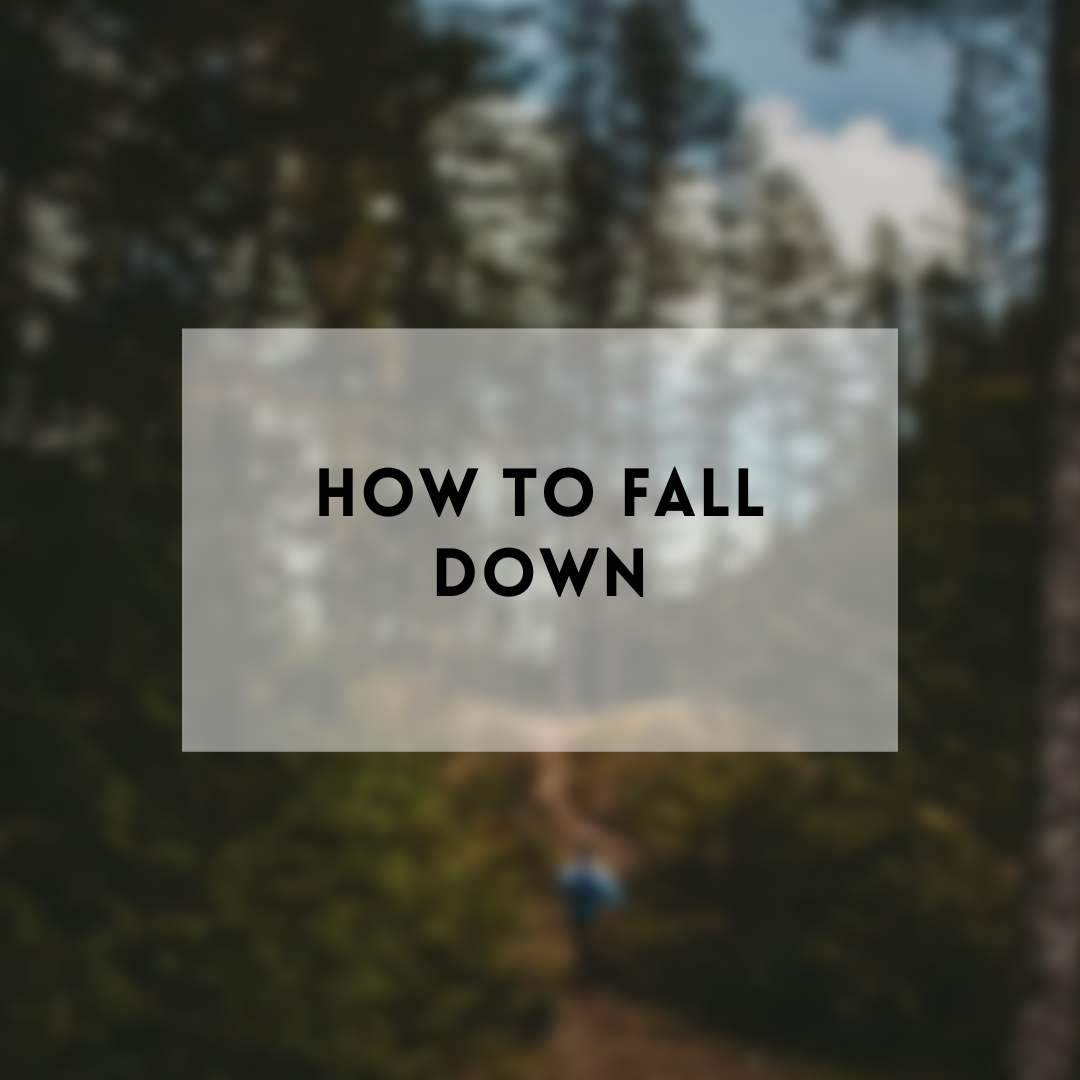How to fall down
Rejection is like falling down while running. It hurts. But you can get back up.
One of the biggest challenges I have had to navigate since I left my job is rejection. I’ve built spreadsheets with targets and tracking. I keep track of the people I’m meeting and the work I’m doing. The data is objective and it says I’m doing fine.
I started trail running about the same time I started my business. I’ve also been tracking my miles and logging my progress. Objectively, the data there is good too. I’m on plan. I’m going further and getting faster as the weeks go on.
Data is one thing. Feelings are another. It’s hard to deal with the sting of rejection and with the pain of falling down on rocks and dirt despite what the data says about progress.
When I worked for other people I could handle being told no. It was the company they were rejecting, not me. Being rejected as an agent of another organization was something I got good at. Being rejected as a solo entrepreneur is new.
Trail running this year, I have found myself falling down. Running is something that’s been a regular part of my fitness endeavors the past 3 years but running on trails is new.
Both rejection and falling hurt.
The thing is, I’ve discovered that there are some lessons to be learned from falling down that can be applied to the art of dealing with rejection.
Falling
The first time I fell down on the trail it was a shock. I went down a hill after my foot caught a tree root and landed on my hands and knees. I was bloody and stunned. After I righted myself and assessed the damage, I reclined on the hill and cried a few big tears. Cars were driving by. I let out my frustration, fear and worry that I would be too injured to train in the coming weeks. Then I got up and ran the mile home.
The last time I fell down, I was eight miles into a long run. I was running on the dirt path next to a paved path around Lake Harriet. I tripped on a rock and felt the fall coming. I stuck my hand out but the rest of the fall was a roll that resulted in dirty limbs but no other injury. I fell in front of a bunch of people who were relaxing on the beach. Nobody said anything. I jumped up and kept running, stunned and feeling as if I should just keep going. A minute later, I realized I was having a hard time breathing and sat down on the side of the lake. I let it out. Again, just a few big tears. Got up. Kept running…
Let your feelings out
There is something about falling and being hurt that makes it okay for me to cry. I feel exactly as I remember feeling as a kid: scared, hurt, stunned. My reaction is to cry. This immediately relieves me.
When I get rejected and feel hurt, I don’t cry. Instead, I immediately try to rationalize and minimize the impact. This keeps me from experiencing the sting as intensely. But I’ve noticed that the negative feelings seem to stick around longer. There are these little creeper feelings of doubt that hang in the back of my head and slow me down after a rejection.
Insight: With rejection, allow your feelings to come out right away (but after you have left the meeting.)
Keep moving
When I fall, there is a moment afterward when I have to decide. The question is: should I end this run should I keep moving? I always consider stopping. But then what? My limbs will get stiff and sore. If you keep moving, the blood keeps moving and you do not atrophy.
Insight: When you get rejected, same thing — keep moving. Keep everything flowing. Do not get stuck and atrophy in that moment.
Pick your feet up
The thing that tripped me? I was dragging my feet. In one case, I was looking down at my Garmin and thinking that I was slow. In another case, I was tired — starting to get sloppy with my feet.
Insight: Don’t look away from your target. When you are getting tired, don’t get sloppy. Slow down and lift your feet higher.
Remember, people aren’t looking (for long)
I was stunned that nobody said anything when I fell in front of the people on the beach. However, I didn’t cry out or ask for help. I jumped up, looked at what had tripped me up and kept on going. They probably forgot about me the moment I was out of view.
When I’ve been rejected, I tend to hang on to the story. I think it through and replay the events. I give the experience meaning and time.
Insight: Upon rejection, a quick inventory will do. No need to spend more time than the time needed to assess and learn. Then, move on. Just show up and be better, stronger and more focused the next time.
